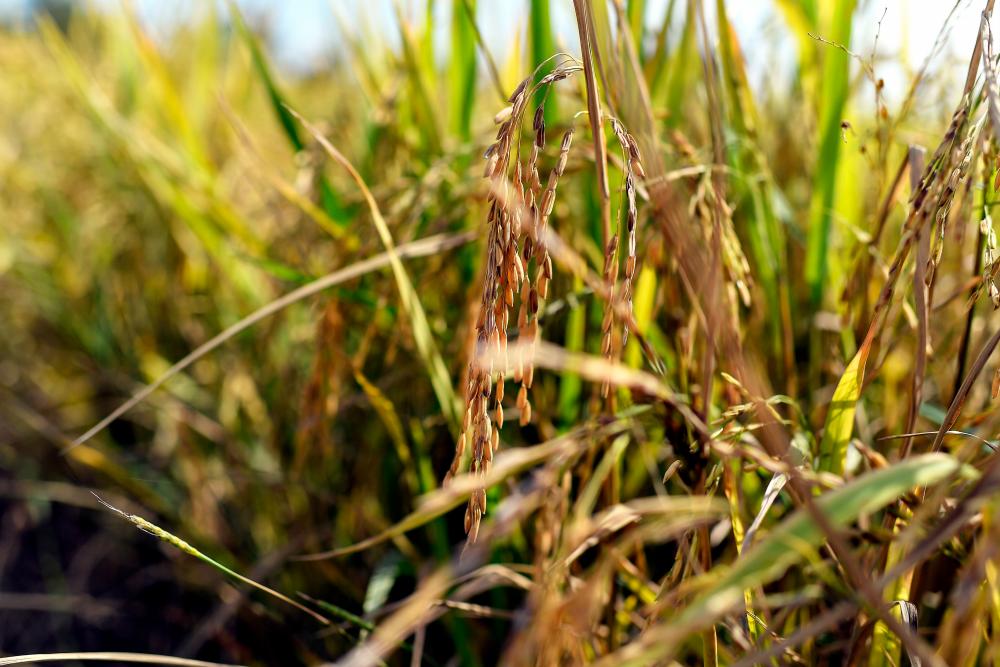POKOK SENA: The extreme heatwave affecting the Pokok Sena district is believed to be one of the reasons for a decline in padi yields by between 20 to 30 percent compared to the previous season.
Mohd Farid Shafie, 38, from Gulau here, who manages over 30 hectares of padi fields, claimed his harvest has been affected by the scorching temperatures for the past month, reaching its peak recently, causing the padi plants to become lightweight and dry.
“The padi has become light, empty; the temperature is extremely high, and farmers thought it was just the usual heat until some even stopped watering their fields for 20 days before harvesting. Suddenly, the temperature rose significantly, causing the padi plants to dry out quickly, resulting in less-filled rice grains.
“No one is to blame; some fields even yielded only seven to eight tonnes per hectare, but miscalculation led to the fields drying up quickly, stunting the growth of the padi plants, affecting those that were flowering at the time,“ he said when interviewed by Bernama here today.
Mohd Farid added that the current El Nino phenomenon has also caused a decrease in their harvest, with an estimated five tonnes per hectare compared to the previous seven tonnes per hectare.
“But we are confident that as long as there is assurance from the Muda Agricultural Development Authority (MADA) that the water levels from the three dams are sufficient for irrigation next season, we are not too worried about replanting later, but we need to be more aware of weather forecasts to avoid early water loss from the fields and follow the planting schedule set by MADA,“ he said.
Another farmer, Jamil Abdullah, 44, said Kedah indeed requires hot weather and a dry season to stabilise the soil for soil treatments, but not excessively hot weather to affect farmers’ yields and a situation beyond expectations.
Jamil, who manages over 35 hectares of padi fields, was also affected as the average yield obtained was around six tonnes per hectare compared to the previous seven tonnes per hectare.
“My padi yields are also not high; with strong heat, the padi becomes dry and less filled compared to the previous season. Previously, we used to get more than seven tonnes, but now, just about six tonnes per hectare are considered acceptable.
“Not only did the plants dry up, but the fields were also affected by diseases such as blast and attacks from other pests, but they are still under control,“ he said, estimating that about 30 percent of the harvest has been affected by this hot weather.
A farmer from Kampung Balik Bukit here, Aziz Mat, 82, who manages around eight hectares of padi fields, also suffered losses as only five hectares of his fields yielded results due to the drought.
“I estimate my losses to be around RM20,000 because many plots (fields) have no produce, they’re empty, extremely hot until the stems shrink and break, about nine ‘relong’ (three hectares) of mine yielded nothing, while others got some, but less.
“All the water and infrastructure are sufficient... but now the main cause is the extreme heatwave, not anyone’s fault,“ he said, now waiting for the replanting, which is expected to start next month.
The Pokok Sena area in Kedah recorded a level two hot weather or heatwave as of 4 pm today.
A check on the Malaysian Meteorological Department (MetMalaysia) website shows that Pokok Sena recorded 37 degrees Celsius, indicating a heatwave level referring to daily maximum temperatures of 37 to 40 degrees Celsius for at least three consecutive days. -Bernama













